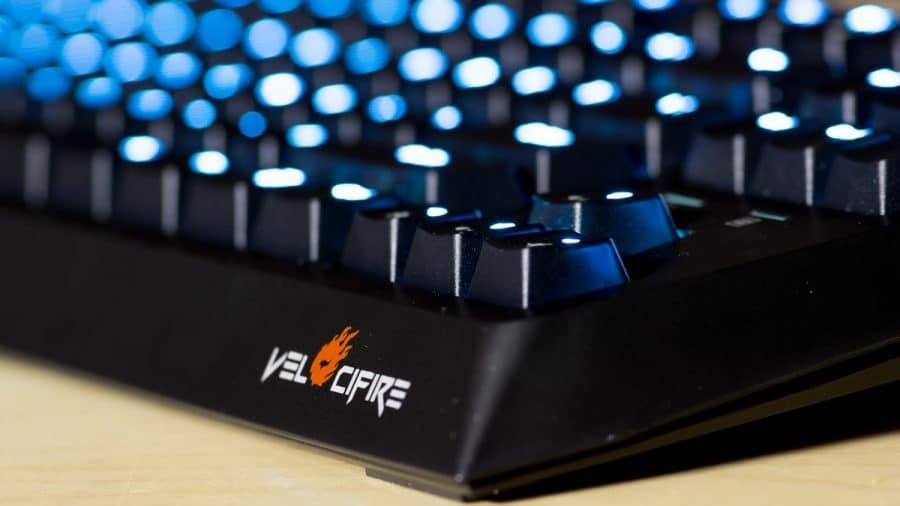Velocifire produces models for the bargain basement sector of the mechanical keyboard market. While they do cut corners in some places, Velocifire products exhibit a high level of quality and usability in comparison to other low priced mechanical keyboards. We’re taking a look at Velocifire’s TKL01, a new tenkeyless mechanical keyboard that follows in the footsteps of the standard form factor Velocifire VM01. In this review, I’ll do a hands-on unboxing and show you the pros and cons of the Velocifire TKL01, check it out below!
Unboxing the Velocifire TKL01
The Velocifire TKL01 mechanical keyboard arrived in an unassuming cardboard box with minimal decoration. Less money spent on frilly packaging typically means that more money is spent creating a superior product.
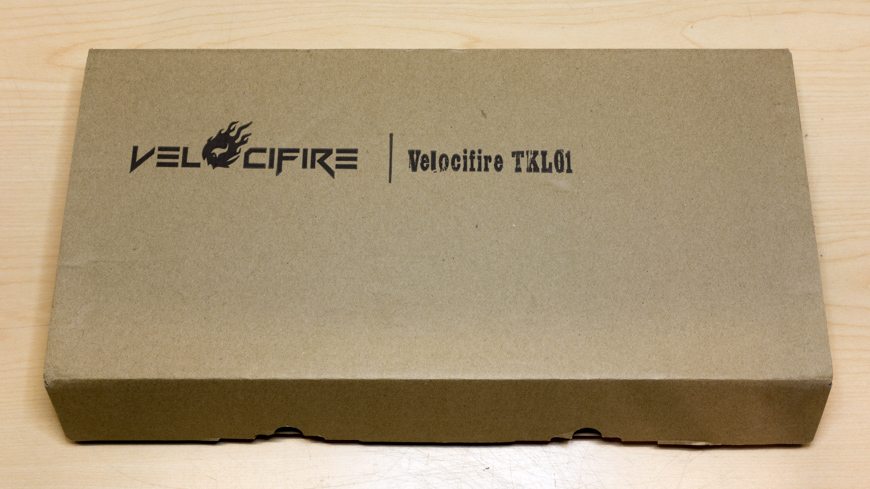
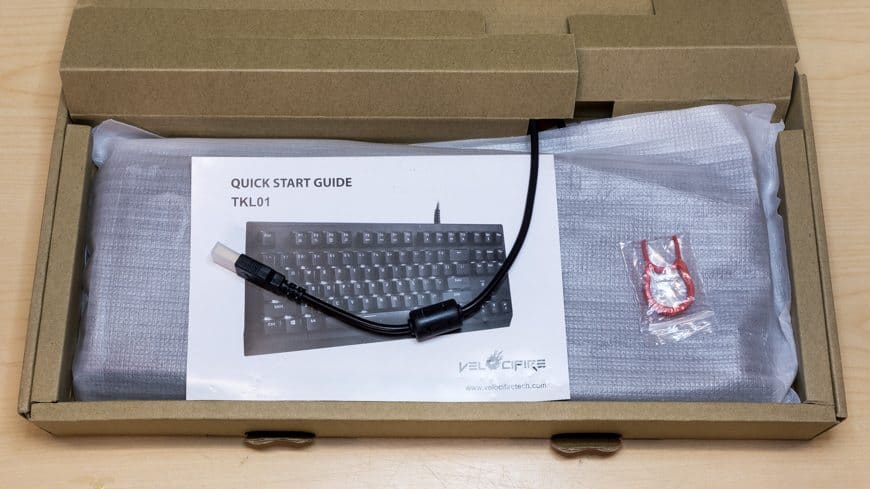
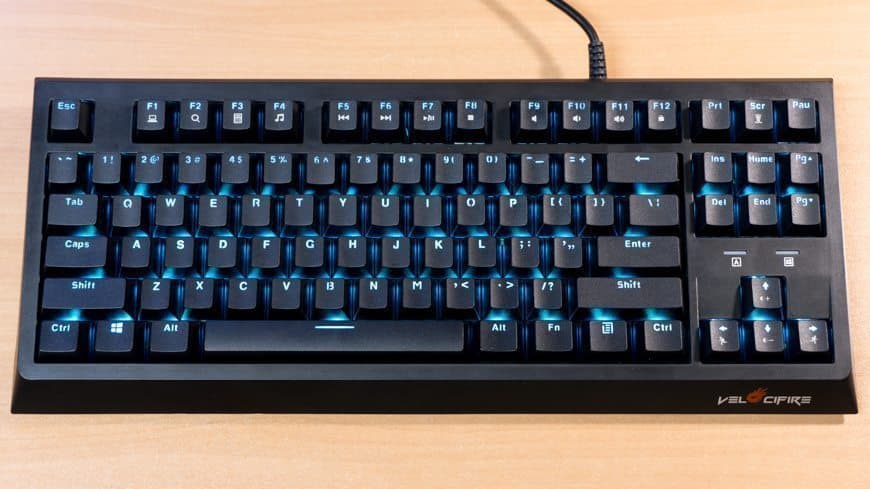
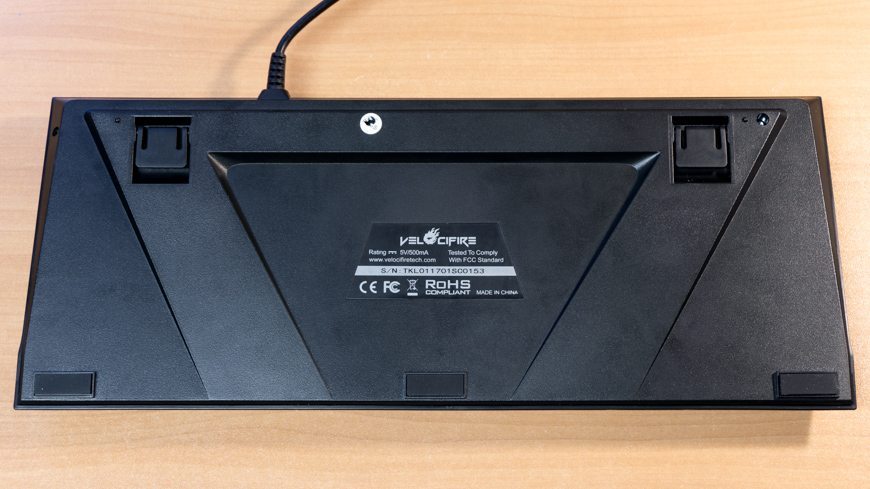
A foam sleeve helps protect the mechanical keyboard during shipping. In addition, a plastic USB cap covers the end of the TKL01’s cable. A single page black and white user manual contain the few instructions you’ll need to operate it. The Velocifire package even includes a keycap puller in a discrete baggie, which is a nice touch at this price point. The Velocifire TKL01 user manual is a simple one-pager with excellent instructions for using the mechanical keyboard.
Build quality
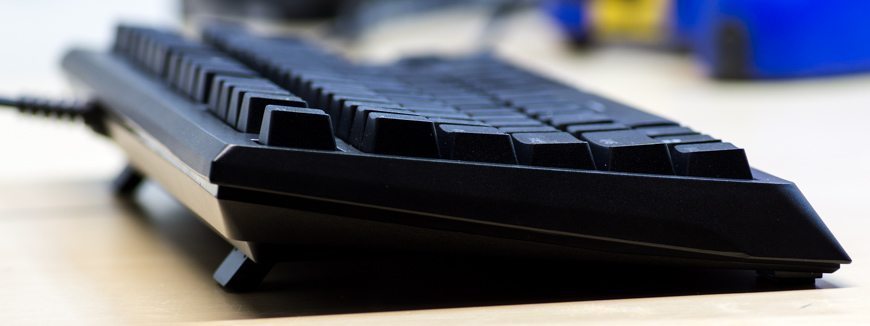
The Velocifire’s TKL01 outer case features lightly textured ABS plastic. There aren’t any notable blemishes or deformities, though there is an upwards warp near the top left of the keyboard. It’s nothing that would be noticeable during normal use — I only picked up on it because I probed the mechanical keyboard bezel to check for creakiness (which is non-existent). A small line of shiny material wraps around the lower case half. I would have preferred it covered, but breaking up the matte finish doesn’t hurt.
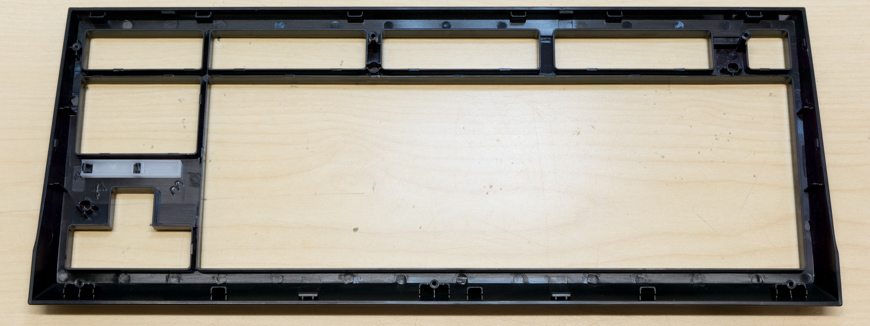
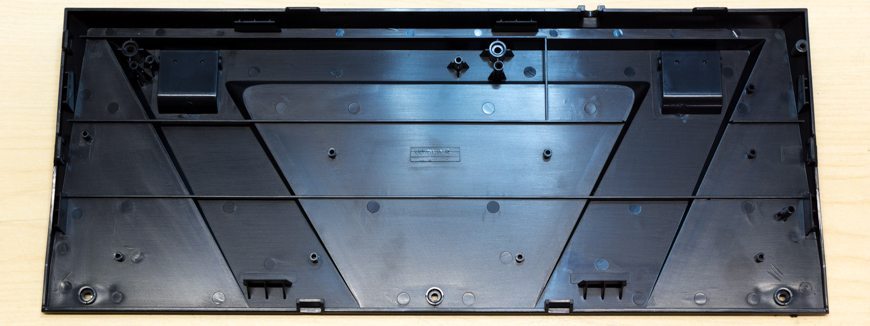
I originally thought that I’d find a weight inside this mechanical keyboard to add some heft, but this thing is a tank that doesn’t cheat in the weight department. The plastic case on the Velocifire TKL01 is exceptionally thick and adequately reinforced, with much of the material measuring ~2mm thick. When I removed the case screws, I found that the mechanical keyboard still held together and didn’t creak. Large plastic clips secure the case halves well; the screws are only there to make sure that nothing goes awry. That’s a good thing, as the small threaded screws are pretty wimpy. At least Velocifire used 6 of them. The plate and PCB are supported by a number of different through-plate pegs and perimeter support braces. Everything fits snugly, which leaves little for me to critique.
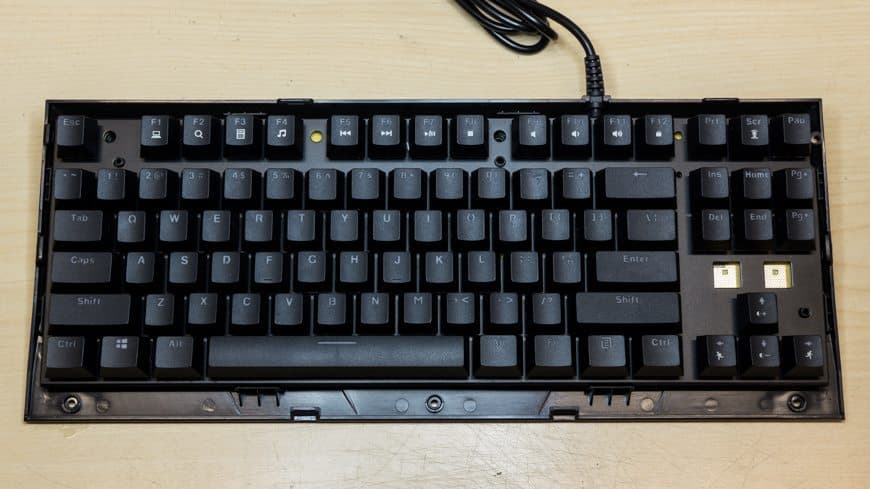
The PCB on the Velocifire TKL01 isn’t fancy, but it works. There aren’t any offensive soldering errors, though there is quite a bit of flux residue near solder joints. The metal plate that supports the PCB and its mechanical Zorro Brown switches isn’t special either. The PCB and plate are stiff enough to get the job done, and that’s what counts at this price point.
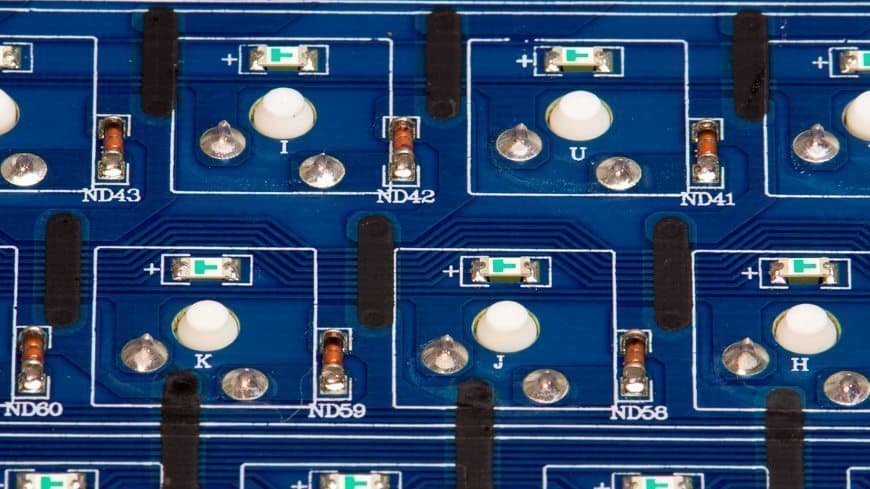
Cables are typically neglected in cheap mechanical keyboards, but the Velocifire TKL01 doesn’t skimp. A reasonable thickness and well-designed strain relief offset the fact that it isn’t braided. A gold plated connector and two ferrite beads (one is inside the case) are icing on the cake, though they don’t have any practical effect on the keyboard’s functionality in everyday environments.
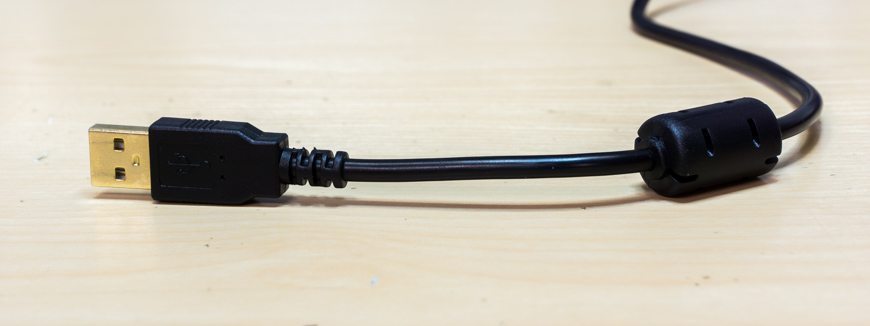
The flip-out feet are very impressive on this mechanical keyboard. They’re substantial, they have rounded rubber pads on their base, and they make a fairly satisfying clacking noise when you pull them out or retract them. They don’t elevate the TKL01 very much, but they do change the typing dynamics enough to be a worthwhile option.
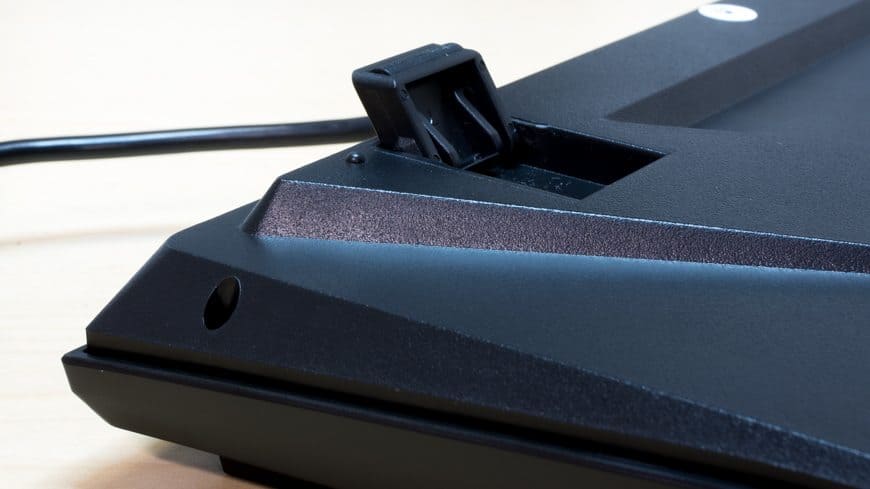
The only significant issue with the Velocifire TKL01 case’s exterior is the fact that it doesn’t have rubber pads at the rear of the mechanical keyboard. Sure, it has three large untextured ones at the front. They’ll provide plenty of grip on most desktop surfaces. My concern is that the small plastic nubs designed keep the keyboard off the table (seriously, they’re minuscule) could scratch or create divots in soft surfaces like wood. That can be avoided by raising the keyboard feet (which have rubber pads), but not everyone likes to type on an angle. If you’re dead set on getting this mechanical keyboard and want to protect your desk you could clip the nubs off and add your own rubber pads.
Velocifire TKL01 – Switches & stabilizers
Switches
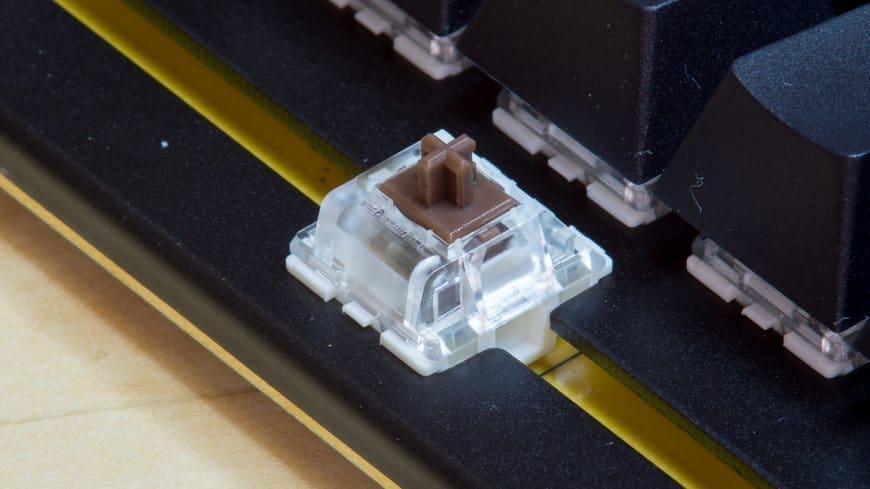
The Zorro Brown switches in the Velocifire TKL01 are less than ideal, but they’re still better than most rubber dome over membrane competitors. The switches have a distinctly springy feel with a definite force increase near the end of the stroke. That’s great for typists who float, but for those who bottom out, it might be a bit tiring. They’re also moderately scratchy in comparison to smooth switches like Gaterons. I’d say they’re roughly equivalent to Cherry Brown switches in that regard.
That scratchiness translates to the sound of the switches as well, unlike Cherry’s offerings. Besides regular top and bottom out clack, there’s a distinct metallic scratching noise that varies in volume from switch to switch. The inconsistency and quality of the mechanical switches are evident in the tolerances given by the manufacturer. 55g +/- 15g isn’t a great number — it allows for a 27% variation in switch weight. There really isn’t anything else noteworthy about the Zorro Browns. They’re just a generic Cherry clone, and they perform similarly to Cherry switches in most other respects.
Brown tactile switches are considered a solid choice for typing and gaming, though they’re better for typing.
Stabilizers
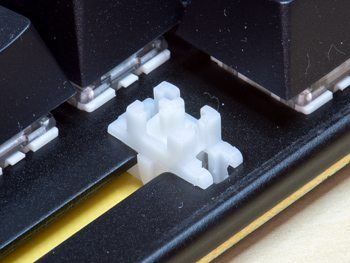
In terms of stabilizers, I like what the mechanical keyboard is doing. They’re clones of Cherry made stabilizers, but I think they interfere with switch bottom out a bit less. A small amount of lube appears to be present. The consistency is thicker than most lubes I’ve found on mechanical keyboards, but that seems to help press feel significant. Stabilized keys, in fact, feel better than unstabilized ones. They’re slightly loose on the plate, though.
TKL01 – Keycap quality
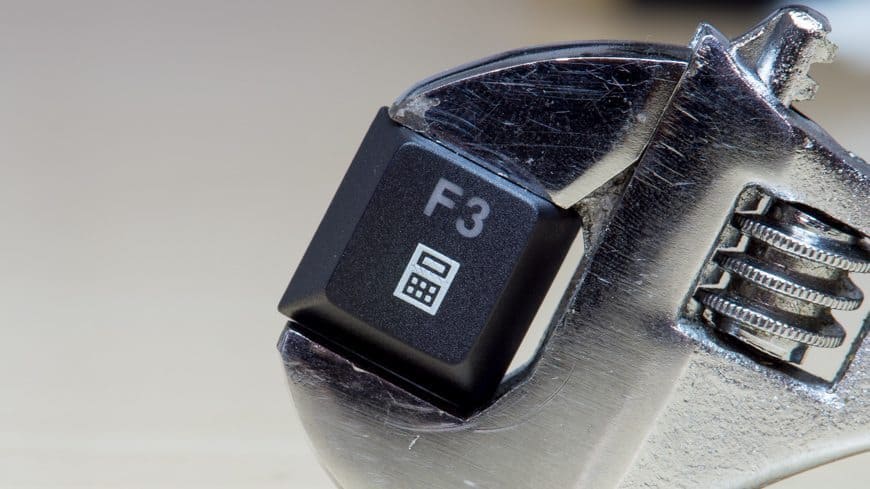
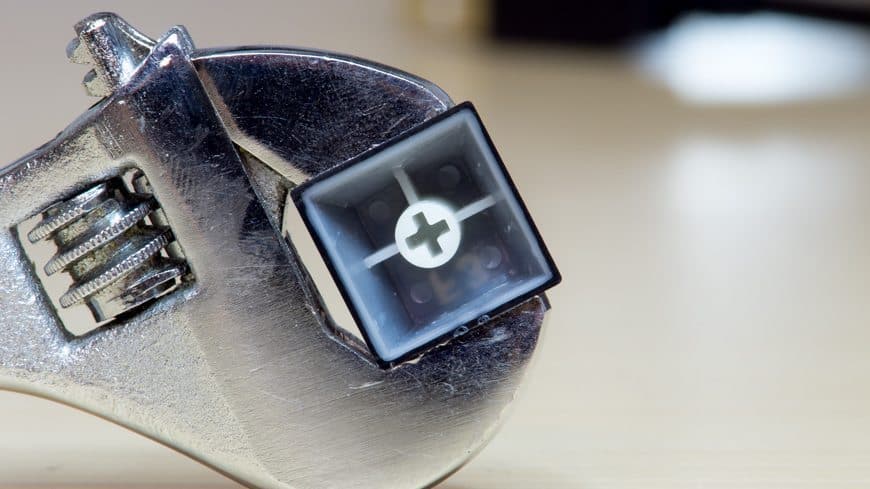
I’m impressed with the Velocifire TKL01’s medium-thick ABS double shot keycaps. They’ll shine over time, but they won’t wear through. It’s hard to find good keycaps on keyboards in any price range, let alone the sub $50 market segment. The pad printing isn’t great, but that’s just being picky.
TKL01 – Features
LEDs
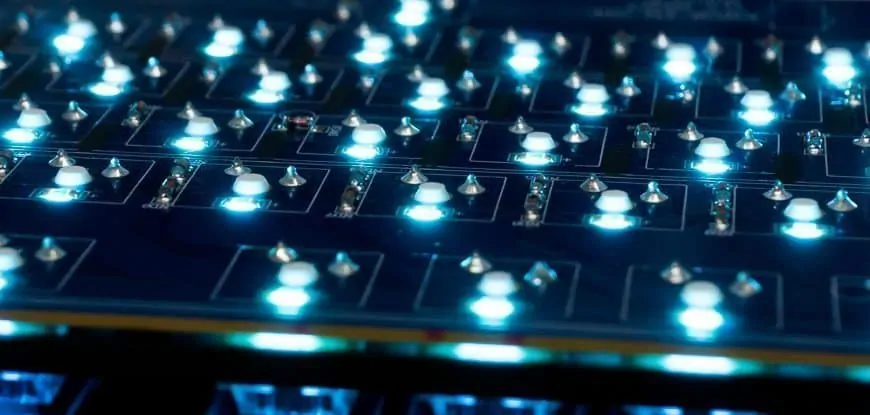
It’s a miracle that this mechanical keyboard has backlit LEDs, let alone decent ones. There aren’t many frills or modes, but they are present. A number of backlighting modes (including some that just reverse the directions of other effects) are present. Breathing, row stacking, and similar settings are available. The teal color is also quite nice, though you may have trouble matching it when purchasing other peripherals. Three levels of adjustment exist: bright, less bright, and off.
Velocifire chose to mount the backlit LEDs below the PCB. Small holes allow them to shine through the transparent switch housings and onto the keycaps. I think that locating them on the bottom of the mechanical keyboard reduces PCB complexity and cost. It would have been cool if the case had translucent sides, as the LEDs leak a lot of light from the bottom of the PCB.
The TKL01 draws 269 mA worst case, which is a very reasonable result. That’s well within USB 2.0 spec and doesn’t come close to touching USB 3.0 ports.
Spillproofing
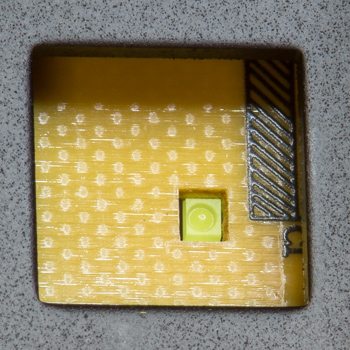
The Velocifire TKL01 doesn’t have any spill-proofing or drainage, which isn’t a huge deal. The shine-through LEDs make worst-case spills much more dangerous. Liquids could run through the LED holes and down the back of the PCB, possibly shorting important parts. You’ll need to take this mechanical keyboard apart and dry it if you spill water on it. If you dump a sticky drink on it, you may as well recycle the thing.
Macros & Fn layer
The function keys are a “what you see is what you get” deal. There aren’t firmware based macros or standout features. I do like the calculator shortcut, though. It’s a feature that’s becoming increasingly rare on mechanical keyboards as the market caters to gamers more exclusively.
Velocifire – Labels & branding

The Velocifire logo is pad printed on the angled front bezel of the TKL01. It’s a reasonable looking logo that doesn’t detract from the keyboard’s aesthetic. I’m not sure how durable the pad printing will be, but it does seem like a firm material. It’s minimalist, but that isn’t a bad thing. The bottom label also seems well done. It was applied just a hair off center, but it’s plasticized so it should hold up to cleaning and general wear.
The Velocifire TKL01 – Editor’s opinion
The Velocifire TKL01 mechanical keyboard offers reasonable quality and a nice aesthetic at an unbelievable price point. I’m surprised that they managed to include NKRO and a 1000hz polling rate in this market segment. Velocifire cut costs in all the right places (and likely lowered its margins for volume sales) to create an extremely competitive product. I really like how sturdy this mechanical keyboard is. After using it for quite some time, this tenkeyless mechanical keyboard has been an enjoyable experience to review and not too shabby for gaming.
The ABS doubleshot keycaps are my favorite part of the Velocifire TKL01. They’re much thicker than caps on other budget boards, but that’s ancillary. Their font selection is the real gem. After being assaulted with edgy gamer fonts it’s refreshing to see something a bit simpler. Sure, it isn’t perfect. Nonetheless, it’s a huge step in the right direction. I know some people who would pay $30 for the keycaps alone! If you’re on the fence about mechanical keyboards or have a small budget, buying something from Velocifire would be a good choice. Or, if you’re just looking for a tenkeyless mechanical keyboard on a budget to kick around with, this would be perfect. If you’re looking at other Velocifire mechanical keyboards, check out our review of the Velocifire T11 here.
Remember, though, that its switches aren’t representative of mechanical keyboards as a whole. Some feel much better. That being said, Velocifire did well to pack the TKL01 mechanical keyboard with features at such a cheap price. Check out the Amazon reviews in the link below or leave a comment, we’d love to hear your thoughts on this mechanical keyboard.
We rate mechanical keyboards on a 10 point scale. 10 is absolute perfection, 6 is average, and anything less is increasingly bad. The Velocifire TKL01 scored a 7.5, which means it is better than average.

